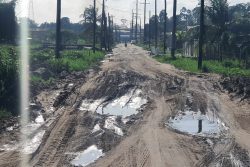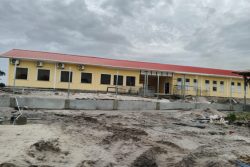Although the imminent starvation of millions in the Horn of Africa has now, finally, been classified as a famine – a term the UN and other international aid agencies reserve for only the most dire emergencies – there is little hope that aid will arrive in time to prevent tens of thousands more deaths. According to the New York Times “In the Dadaab refugee camp along the Kenya-Somalia border, the hospitals are full of emaciated babies taking their last breaths.”
As nearly 2,000 new refugees stream across the border each day into the already overburdened camps in Kenya, there is every likelihood that the crisis will get worse before it is brought under control. Currently 4 million people are at risk of starvation but this figure may soon double and relief efforts could easily be complicated by a cholera epidemic in Ethiopia.
The causes of any famine are complex, but the current situation has long been entirely predictable. Twenty years of civil war, the absence of an effective central government, farmlands that were vulnerable to global climate change, and the deliberate marginalisation of traditional farmers, clearly led to this crisis. As John Vidal points out in the Guardian, “Aid agencies and governments have known for almost a year that food would run out by now. But it is only now, when the children begin to die and the cattle have been sold or died that the global humanitarian machine has moved in, with its TV shows, co-ordinated appeals and celebrities.” During recent months, while media in Europe and America have focused on serious internal problems – Greek debt, phone-hacking, a recession and looming default – it is sad but undeniably true that another round of African misery was never going to become newsworthy until the news footage started to resemble that from the Ethiopian famine in the 1980s.
The good news, if there is any, is that the World Food Programme has been able to raise more than half of the funding necessary for immediate relief – US$300 million over the next two months. The bad news is that the projected cost of the overall relief effort, US$1.6 billion will do little more than bring the immediate crisis under control. Long term solutions to Somalia’s problems will require political accommodations that have proved unattainable for decades. In many ways the country seems doomed to remain a classic “failed state.” Two years ago it was ranked as the most corrupt state in the world by Transparency International. Last year it nestled between Iraq and Afghanistan at the bottom of the Global Peace Index compiled by the Institute for Economics and Peace. Beyond these man-made problems lies the implacable advance of global climate change – there have been three major droughts in the Horn of Africa since 2000. Most of the people now dying in the Kenyan camps are only alive because of previous relief efforts which were mounted in response to the earlier droughts.
Despite the energy which has gone into Millennium Development Goals, modern Africa is likely to experience other famines in the near future. In addition to war – the major cause of the current crisis – and climate change, even urban development, somewhat paradoxically, can contribute to food scarcity since it diminishes the amount of available farmland. According to the US-based Environment Science and Policy, Africa could lose as much as 247 million acres of farmland by 2050 – primarily because of global climate change – the same amount of land that the United States currently uses to produce its eight most important crops. Furthermore, since world food prices are now driven primarily by commodity markets – oil shocks can double or triple the global price of staples such as rice and wheat – it is practically impossible to shield the world’s poorest people (who spend up to 80% of their incomes on food) from the vicissitudes of global markets.
And yet, even in these crisis conditions, famine relief is surprisingly affordable. The $1.6 billion needed to feed the starving millions of Somalia pales in comparison to the $600 million which the US has already spent bombing Libya (a single cruise missile costs more than $1 million) and the projected US$1.1 billion which the Libya campaign will cost through September. While there has always been enough money to feed the world’s poor, developed countries have conveniently been persuaded that their spending priorities lie elsewhere. Within Africa the situation is no better. The Telegraph recently reported that “no African country has offered a donation to help drought victims in the Horn of Africa outside of those affected.”
The appalling waste of human life in the present famine is a terrifying reminder of the consequences of the West’s lack of engagement with Africa. During the last twenty years the developed world has relied on the excuse of “African solutions for African problems” while spectating on the Rwandan genocide, the Congo Wars, the proliferation of mass rape, internal displacement and mass murder in Darfur, and the recruitment of child soldiers throughout the continent. Until this apathy is replaced by a revaluation of African lives – to parity with European and American lives – crises like this may receive financial relief but their underlying political and economic pathologies will continue to flourish in the shadows of Western indifference.







